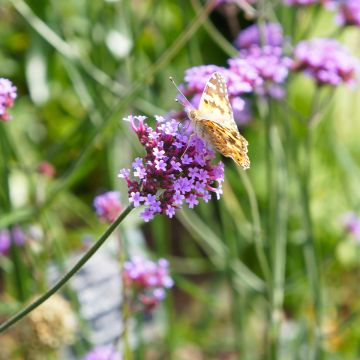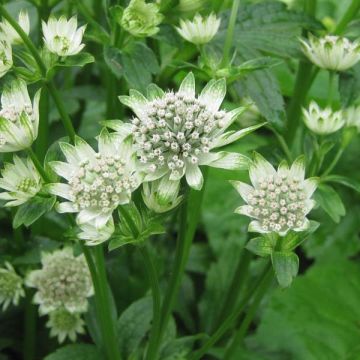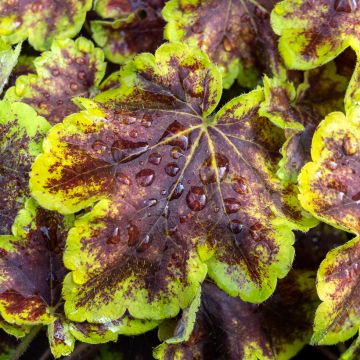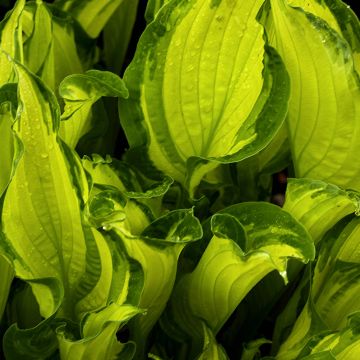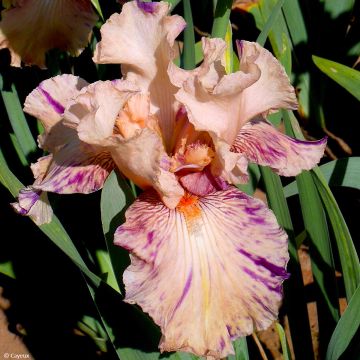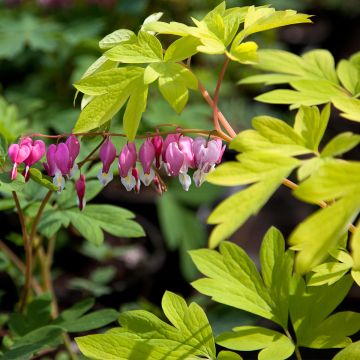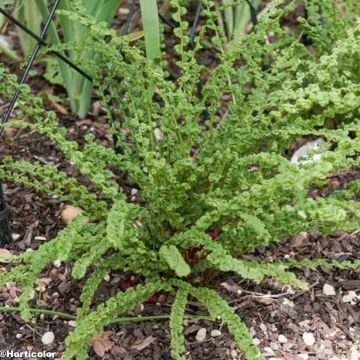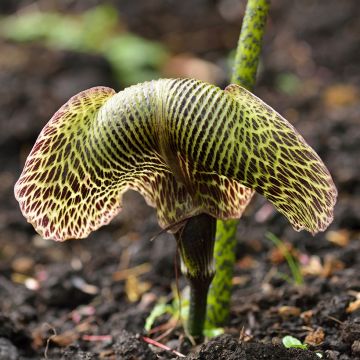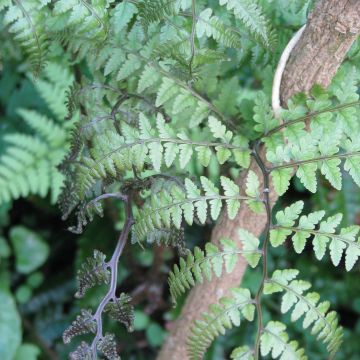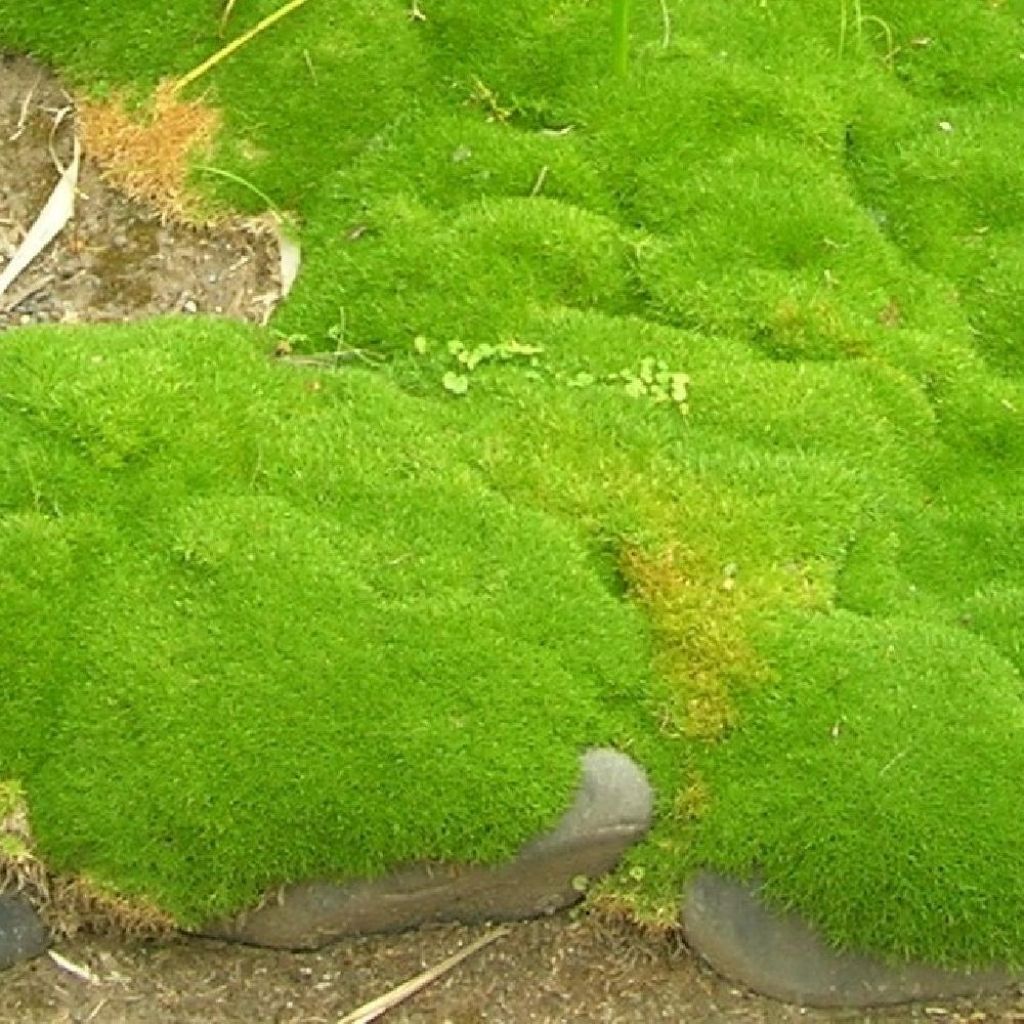

Scleranthus uniflorus
Scleranthus uniflorus
Scleranthus uniflorus
Planted upon arrival in partial shade, with no immediate competition and kept moist. The plant quickly dried out and I thought it might be its winter state. I now believe it is dead as there has been no regrowth in spring.
Mo, 27/05/2025
Special offer!
Receive a €20 voucher for any order over €90 (excluding delivery costs, credit notes, and plastic-free options)!
1- Add your favorite plants to your cart.
2- Once you have reached €90, confirm your order (you can even choose the delivery date!).
3- As soon as your order is shipped, you will receive an email containing your voucher code, valid for 3 months (90 days).
Your voucher is unique and can only be used once, for any order with a minimum value of €20, excluding delivery costs.
Can be combined with other current offers, non-divisible and non-refundable.
Home or relay delivery (depending on size and destination)
Schedule delivery date,
and select date in basket
This plant carries a 12 months recovery warranty
More information
We guarantee the quality of our plants for a full growing cycle, and will replace at our expense any plant that fails to recover under normal climatic and planting conditions.
Would this plant suit my garden?
Set up your Plantfit profile →
Description
Scleranthus uniflorus is not a moss, despite appearances. It is a perennial groundcover plant native to New Zealand, highly appreciated in Japanese or miniature gardens where it forms remarkable, very green mounds, even in winter. This relatively hardy ground cover is used outdoors, in morning sun or in light shade that remains bright, planted in humus-rich, slightly acidic, well-drained soil that stays moist. Under these conditions, it works wonders in Asian or contemporary-inspired settings, in moist rockeries, or to structure a small urban garden.
Scleranthus uniflorus belongs, like carnations, to the Caryophyllaceae family. It is a slow-growing perennial grass-like plant, averaging 15cm (6in) in height, capable of spreading over 60 to 80cm (24 to 32in) in 5 years. Over time, its vegetation takes on some relief, forming small domes that give it a beautiful mounding aspect, with a soft texture to the touch. The foliage is composed of countless small linear and pointed leaves, short and dense, of a tender green colour. They are tightly packed against each other. The flowering in May-June is insignificant, taking the form of tiny white-greenish to yellowish flowers. The foliage persists in winter if the temperatures do not drop too low. Otherwise, it dries up but will reappear in spring. Its hardiness does not exceed -10°C (14°F) at its most extreme, in well-drained soil. However, it is not an indoor plant.
Scleranthus uniflorus is perfect in Japanese, Asian-inspired, or contemporary gardens. It can be planted at the base of bushes, in the ground or in pots, or between large rocks in a moist rockery, near a small waterfall, or anywhere the soil remains moist and away from arid exposures. In a small urban garden, it can be planted between paving stones, for example. This little plant is particularly suitable for ornamenting ericaceous beds, to dress the base of rhododendrons, Japanese azaleas, and other camellias. It is a perfect plant for creative gardeners.
Report an error about the product description
Scleranthus uniflorus in pictures
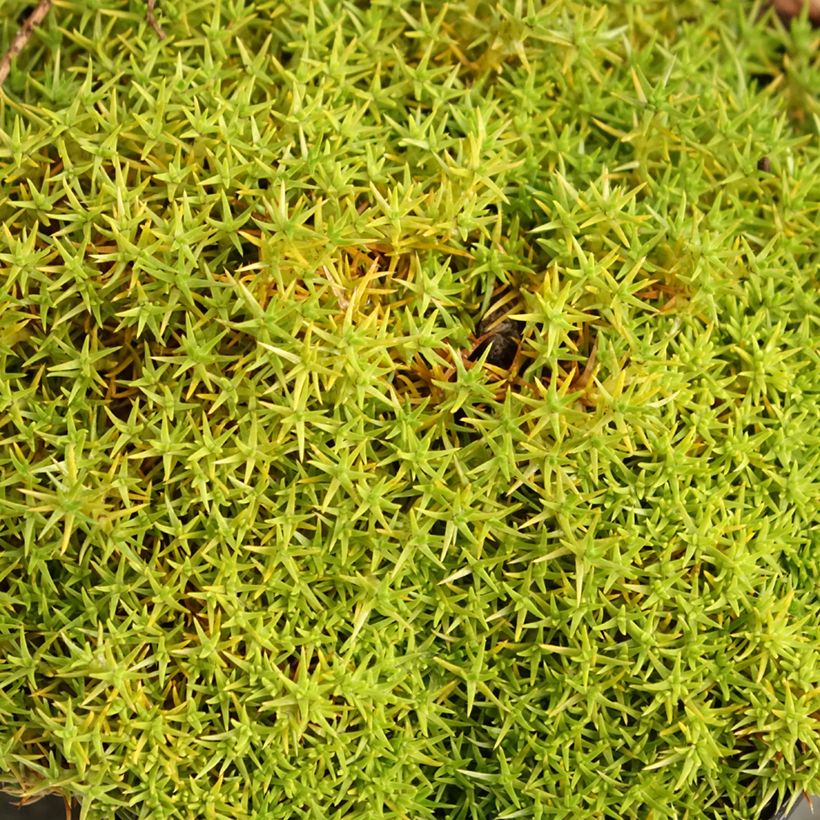

Flowering
Foliage
Plant habit
Botanical data
Scleranthus
uniflorus
Caryophyllaceae
Oceania
Other Perennials A to Z
View all →Planting and care
Scleranthus uniflorus is not very hardy, up to -10°C (14°F) in extreme cases if the soil is not waterlogged. It grows more easily in a mild oceanic climate, where rainfall is regular, winters are not too harsh, and summers are not too hot. Plant it in neutral to slightly acidic, light soil that retains moisture all year round and always remains somewhat cool even in summer. Avoid overly sunny exposures, as well as dense shade. Choose a semi-shaded, bright exposure, spared from the sun's rays during the hottest hours of the day. The base of deciduous trees and bushes suits it, as long as the soil is rich in humus, not too dry in summer, and well-drained in winter. A mixture of compost, turf, and sand will be suitable as long as it never dries out completely. Dry winds, as well as cold, can dry out the vegetation. The foliage will then regenerate in spring.
Planting period
Intended location
Care
Planting & care advice
-
, onOrder confirmed
Reply from on Promesse de fleurs
Similar products
Haven't found what you were looking for?
Hardiness is the lowest winter temperature a plant can endure without suffering serious damage or even dying. However, hardiness is affected by location (a sheltered area, such as a patio), protection (winter cover) and soil type (hardiness is improved by well-drained soil).

Photo Sharing Terms & Conditions
In order to encourage gardeners to interact and share their experiences, Promesse de fleurs offers various media enabling content to be uploaded onto its Site - in particular via the ‘Photo sharing’ module.
The User agrees to refrain from:
- Posting any content that is illegal, prejudicial, insulting, racist, inciteful to hatred, revisionist, contrary to public decency, that infringes on privacy or on the privacy rights of third parties, in particular the publicity rights of persons and goods, intellectual property rights, or the right to privacy.
- Submitting content on behalf of a third party;
- Impersonate the identity of a third party and/or publish any personal information about a third party;
In general, the User undertakes to refrain from any unethical behaviour.
All Content (in particular text, comments, files, images, photos, videos, creative works, etc.), which may be subject to property or intellectual property rights, image or other private rights, shall remain the property of the User, subject to the limited rights granted by the terms of the licence granted by Promesse de fleurs as stated below. Users are at liberty to publish or not to publish such Content on the Site, notably via the ‘Photo Sharing’ facility, and accept that this Content shall be made public and freely accessible, notably on the Internet.
Users further acknowledge, undertake to have ,and guarantee that they hold all necessary rights and permissions to publish such material on the Site, in particular with regard to the legislation in force pertaining to any privacy, property, intellectual property, image, or contractual rights, or rights of any other nature. By publishing such Content on the Site, Users acknowledge accepting full liability as publishers of the Content within the meaning of the law, and grant Promesse de fleurs, free of charge, an inclusive, worldwide licence for the said Content for the entire duration of its publication, including all reproduction, representation, up/downloading, displaying, performing, transmission, and storage rights.
Users also grant permission for their name to be linked to the Content and accept that this link may not always be made available.
By engaging in posting material, Users consent to their Content becoming automatically accessible on the Internet, in particular on other sites and/or blogs and/or web pages of the Promesse de fleurs site, including in particular social pages and the Promesse de fleurs catalogue.
Users may secure the removal of entrusted content free of charge by issuing a simple request via our contact form.
The flowering period indicated on our website applies to countries and regions located in USDA zone 8 (France, the United Kingdom, Ireland, the Netherlands, etc.)
It will vary according to where you live:
- In zones 9 to 10 (Italy, Spain, Greece, etc.), flowering will occur about 2 to 4 weeks earlier.
- In zones 6 to 7 (Germany, Poland, Slovenia, and lower mountainous regions), flowering will be delayed by 2 to 3 weeks.
- In zone 5 (Central Europe, Scandinavia), blooming will be delayed by 3 to 5 weeks.
In temperate climates, pruning of spring-flowering shrubs (forsythia, spireas, etc.) should be done just after flowering.
Pruning of summer-flowering shrubs (Indian Lilac, Perovskia, etc.) can be done in winter or spring.
In cold regions as well as with frost-sensitive plants, avoid pruning too early when severe frosts may still occur.
The planting period indicated on our website applies to countries and regions located in USDA zone 8 (France, United Kingdom, Ireland, Netherlands).
It will vary according to where you live:
- In Mediterranean zones (Marseille, Madrid, Milan, etc.), autumn and winter are the best planting periods.
- In continental zones (Strasbourg, Munich, Vienna, etc.), delay planting by 2 to 3 weeks in spring and bring it forward by 2 to 4 weeks in autumn.
- In mountainous regions (the Alps, Pyrenees, Carpathians, etc.), it is best to plant in late spring (May-June) or late summer (August-September).
The harvesting period indicated on our website applies to countries and regions in USDA zone 8 (France, England, Ireland, the Netherlands).
In colder areas (Scandinavia, Poland, Austria...) fruit and vegetable harvests are likely to be delayed by 3-4 weeks.
In warmer areas (Italy, Spain, Greece, etc.), harvesting will probably take place earlier, depending on weather conditions.
The sowing periods indicated on our website apply to countries and regions within USDA Zone 8 (France, UK, Ireland, Netherlands).
In colder areas (Scandinavia, Poland, Austria...), delay any outdoor sowing by 3-4 weeks, or sow under glass.
In warmer climes (Italy, Spain, Greece, etc.), bring outdoor sowing forward by a few weeks.































